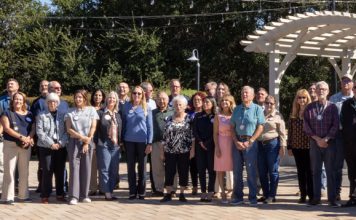Dear Editor:
It is important to correct the inaccuracies and
mischaracterization of the Association of Bay Area Governments and
its responsibilities for housing found in The Dispatch’s Jan. 24
editorial,
”
Suggestions, Solutions.
”
Dear Editor:
It is important to correct the inaccuracies and mischaracterization of the Association of Bay Area Governments and its responsibilities for housing found in The Dispatch’s Jan. 24 editorial, “Suggestions, Solutions.” Frankly, the Gilroy Dispatch’s complaining and whining about housing numbers and ABAG, misses the point. We all know that the housing crisis is real and that there is a critical lack of affordable housing locally, regionally, and statewide. We all agree that there is no one solution, but that doesn’t mean that we throw up our hands in dismay and give up trying to address the issue.
The much maligned state-mandated law that requires regional agencies like ABAG and other councils of governments to distribute regional housing need numbers provided by the State Department of Housing and Community Development is designed to ensure that local governments plan for the housing that it needs.
ABAG, the Bay Area’s council of governments and regional planning agency representing the region’s nine counties and 101 cities, is required to allocate these housing need numbers to individual cities and counties. This distribution is achieved after an intense process of developing a methodology and a set of allocations that equitably distribute the state-mandated “housing need” numbers for high, medium, low and very low income housing throughout the Bay Area.
These allocations are not the raw numbers the editorial complains about, but are the result of extensive feedback from our Bay Area cities and counties and intense deliberations by local government officials on the ABAG Executive Board. Regional and local factors like land use, availability of land, jobs, current housing, and transportation systems are some of the issues that jurisdictions wrestle with when examining the number of affordable homes needed in this allocation process. The next step to receiving the housing need numbers is the process that individual cities and counties go through to plan for these housing needs – identifying them in the Housing Element of their General Plans, which then must be approved by the state HCD. This complex process happens about every five to seven years.
But in the end these are still just numbers that help focus planning. ABAG’s ongoing and continuing interest is assisting cities and counties address the growth challenges and determine how it actually happens in the most desirable way for the region. ABAG works hard and continuously at the state and legislative level to help ensure that local governments have more access to tools, funding, and resources needed to support affordable housing development. In fact, through ABAG bonds for nearly $1 billion have been issued to finance affordable housing throughout the region and state, representing 10,000 units in more than 60 housing developments. ABAG has provided $835 million in below market financing to 35 affordable housing providers, schools, and other non profits in Santa Clara County alone, with $69 million in capital financing provided to 14 Santa Clara County local governments.
As part of these efforts, ABAG, MTC, and BAAQMD have recently embarked on a joint regional planning program to implement and refine the Bay Area’s Smart Growth Vision with housing as the strategic focus. Housing is emphasized because it responds to pressing current regional priority: dealing with an affordability crisis. Producing more housing in the right places will also assist the region’s transportation and environmental objectives. The most critical part of this planning program is our partnership with local governments. Land-use policies and development decisions are the responsibility of local governments, and a regional vision can only be achieved through the actions of local governments.
The editorial is right about one thing – complaining is counter productive. Only by working together on the many projects and programs that will help make progress in providing affordable housing for our communities and residents can we be successful. For more insight into regional housing needs and jobs-housing balance, we recommend that readers visit ABAG’s website at www.abag.ca.gov for projections, data, and overviews of regional and local housing projects.
Councilmember Dave Cortese,
ABAG President, City of San Jose











